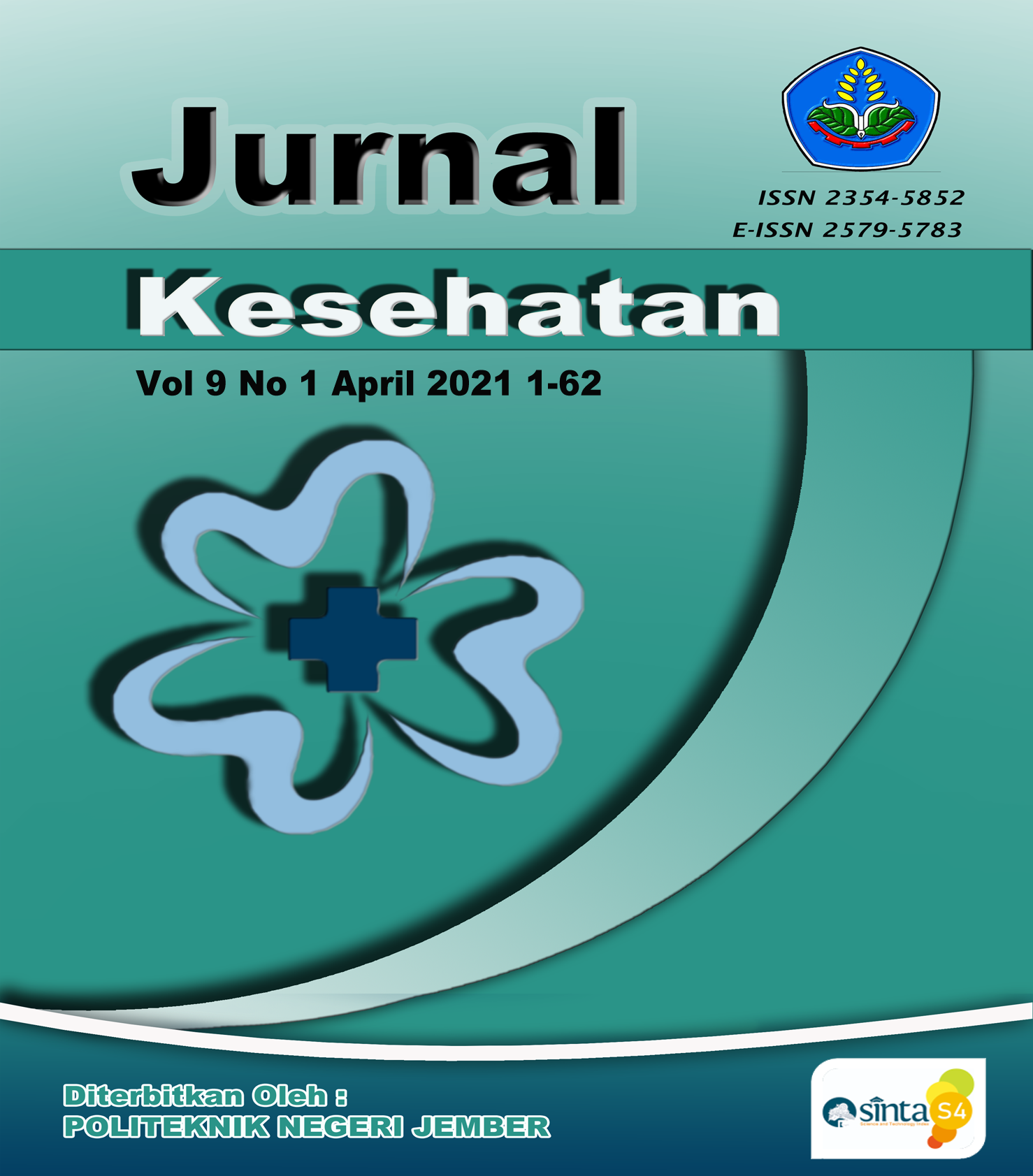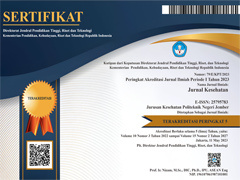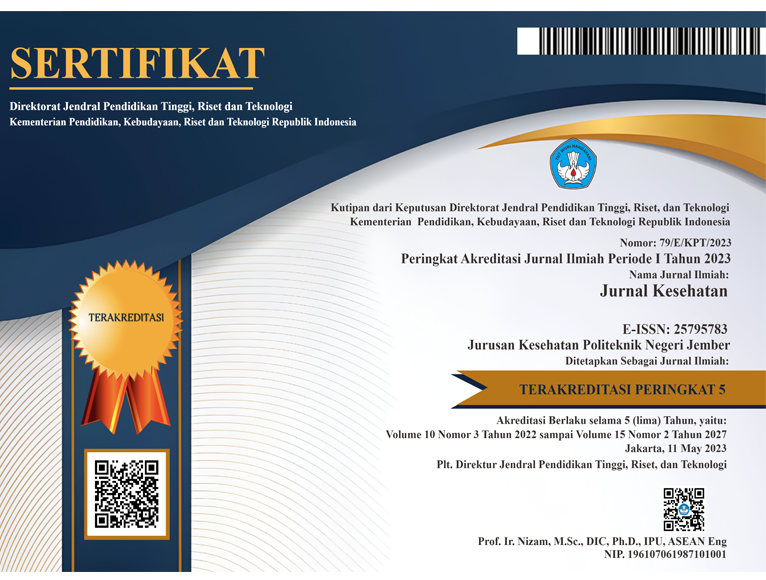
Perbedaan Kualitas Hidup Lansia Wanita Berpasangan dengan Tidak Berpasangan di Posyandu Lansia Kecamatan Sumbersari Kabupaten Jember
DOI:
10.25047/jkes.v9i1.115Downloads
Abstract
Quality of Life is a concept affected in a complex way by the person's physical health, psychological state, social relationships, and their relationship to salient features of their environment. This research aimed to determine the difference in the quality of life between the married and single elderly woman in posyandu for elderly Sumbersari Subdistrict, Jember Regency. This research was analytically studies using cross sectional design. The number of sample was 140 respondent selected by multistage random sampling. Mann Whitney and Kruskal Wallis test (alpha 0,05) was applied to analyze the data. There were not significant difference between quality of life of the married and single elderly woman (p=0,498). Good quality of life was greater in elderly women in pairs of 16.4%. There were a significant differences in elderly women who were had couples and who did not in pairs quality of life with the physical domain (p = 0,000), social relations (p = 0,000) and the environment (p = 0.001).
Keywords: Quality of Life. Married and Single Elderly Woman, Posyandu for Elderly
License
Copyright (c) 2021 Jurnal Kesehatan

This work is licensed under a Creative Commons Attribution-ShareAlike 4.0 International License.
Authors who publish in this journal agree to the following terms:
1. Copyright belongs to the medical journal as a publication
2. The author retains copyright and grants the journal rights to the first publication carried out simultaneously under a Creative Commons Attribution License which allows others to share the work with an acknowledgment of the author's work and initial publication in this journal.
3. Authors may enter into separate additional contractual arrangements for the non-exclusive distribution of the work (eg sending it to an institutional repository or publishing it in a book) with acknowledgment of initial publication in this journal.
4. Authors are permitted and encouraged to post work online (eg in institutional repositories or on their websites) before and during the submission process, as before and larger citations of published work (see Effects of Open Access).
Selengkapnya tentang teks sumber ini













